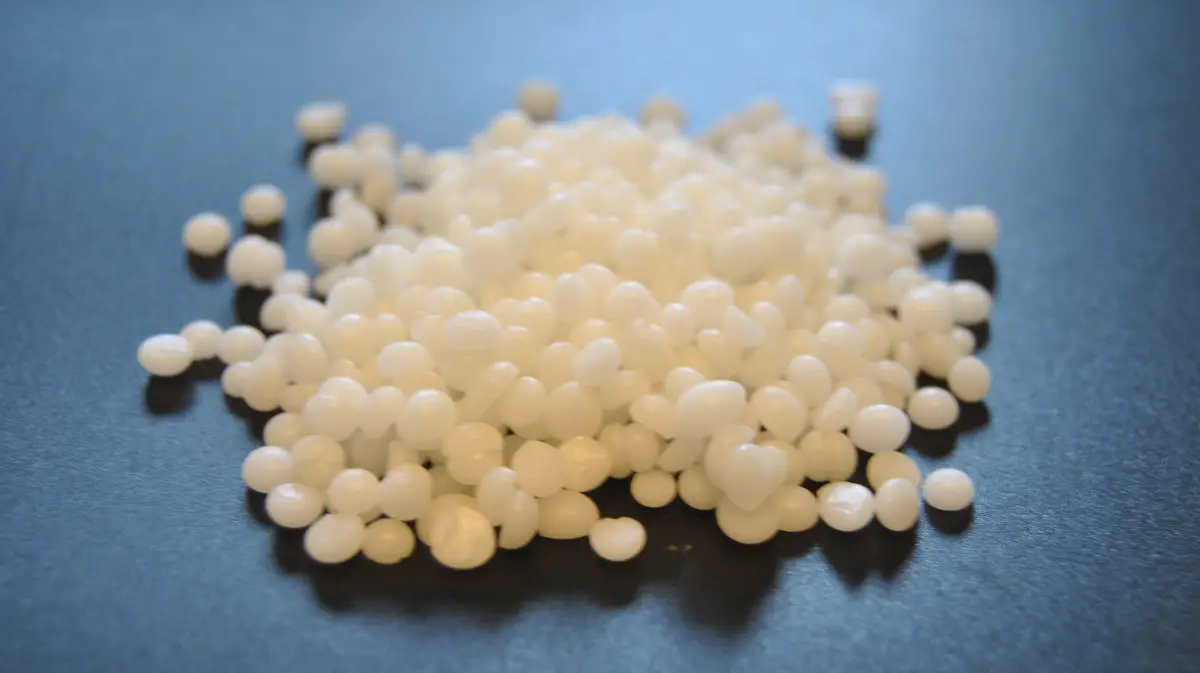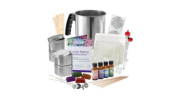login or create an account

Candle making additives - Vybar
Vybar™ is a polymer. A polymer is a high molecular weight organic compound, natural or synthetic, whose structure can be represented by a repeated small unit, the monomer (eg, polyethylene, rubber, cellulose). Synthetic polymers are formed by addition or condensation polymerization of monomers.
Vybar is developed and patented by Baker Hughes. Dozens of variations exist, targeted at different industries. Four of these variations are formulated specifically to be used in candlemaking.

In the first version of this article, written more than twenty years ago, I was talking about Vybar in the singular form, for the simple reason that there was only one version available to candlemakers back then. Nowadays, I should be using the plural form but honestly, I don't think I can get used to that
So just remember that different versions of Vybar are available and always use the version that fits your candlemaking project best.
What are the advantages of Vybar?
Vybar has some very desirable effects when you add it to paraffin wax when added Among those:
- it allows for a higher fragrance-load and results in candles with a stronger scent, together with an improved fragrance distribution when burned,
- a side-effect of enhanced oil-binding is the prevention of oil "bleeding" out and the elimination of mottling (except with Vybar 343, more about this below),
- if gives candles an improved surface appearance, enhances the structural strength of the candle and can help minimize surface air bubbles,
- it gives the paraffin wax a greater opacity,
- it greatly promotes a uniform dye dispersion which results in more vivid colors.
To add scent to a candle (this is explained in details in the article about Candle scents), you add a certain amount of fragrance oil to the wax. Paraffin wax, due to its chemical composition, only allows for a limited amount of additional oil. The classic proportion of fragrance oil is 1 ounce (28,35 grams) per pound (450 grams) of paraffin but, as 1 ounce is considered by the industry as "double-scented" already, the actual "basic" proportion is 1/2 ounce per pound.
When you visit the website of a candle vendor and see they describe their creations as being "double-scented" or "triple-scented", what they actually mean is that the wax they use contains respectively 1 ounce and 1,5 ounce per pound of paraffin wax.
To bind such an amount of fragrance oil to the paraffin, it is necessary to add a binding agent. This is where Vybar plays an important part.
But caution is required here: too much of this additive and the fragrance oil will become bound so tightly to the paraffin that the scent will be neutralized, properly imprisoned into the wax (which is not the result you are looking for). If you have trouble achieving a strongly scented candle, try and decrease the proportion of Vybar used. 1% is a good starting point. To find the ideal proportion, a little trial and error is unavoidable!
Vybar as an alternative to stearic acid
Vybar is commonly used to replace stearic acid (stearin) whenever the use of the latter can cause issues, for example in combination with flexible molds that can be damaged by the acid.
What type of Vybar should I use?
As mentioned earlier, there are four variations of the polymer made to be used in candlemaking even though you'll probably ever need and use one or two of them.
- Vybar 103 - This version is formulated for use with a paraffin wax with a melting point of 137°F or higher (pillar candles, votive candles...)
- Vybar 260 - Use this version in combination with paraffin waxes with a melting point of 137°F or lower (container candles)
- Vybar 343 - The one I mentioned that is compatible with the mottling, or snowflake, effect. Still allows for a good scent retention and the other effects of Vybar.
- Vybar 825 - This version is featured on the page of the Baker Hugues website dedicated to candles but very little information is given. According to the patent that relates to it, it seems to be a liquid version of Vybar 343.
Some suppliers offer a candlemaking additive called Vybar 3451. Unfortunately, I wasn't able to find any information about it. It is not mentioned on the Baker Hughes website.
 Thanks a bunch!
Thanks a bunch!


